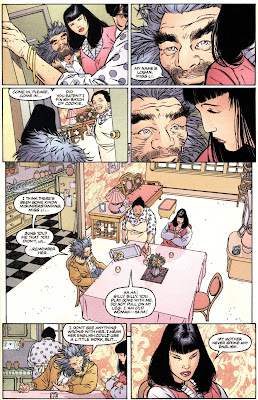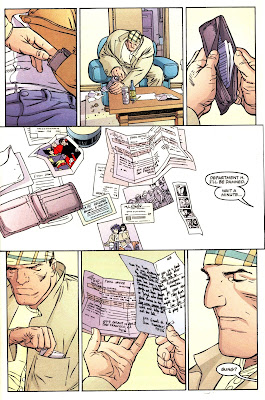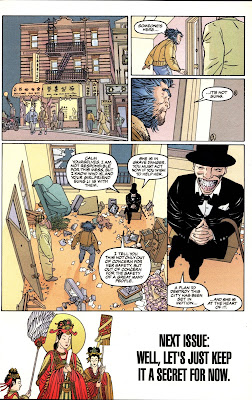Book Review: 'Thongor Fights the Pirates of Tarakus' by Lin Carter
3 / 5 Stars
'Thongor Fights the Pirates of Tarakus' (160 pp) was published by Berkley Books in July, 1970. The cover artwork appears to be signed by Jeffrey Jones. A second edition was issued in June 1976, also by Berkley, and features cover art by Vincent Di Fate.
Lin Carter began his 'Thongor' novels in 1965, with 'The Wizard of Lemuria' (1965), but the series really gathered momentum after Lancer Books began publishing its 'Conan' paperbacks starting in 1967 and introduced the sword-and-sorcery genre to an entire generation of Baby Boomers. 'Thongor Fights the Pirates of Tarakus' was the sixth and last of the novels, although Carter continued to publish Thongor short stories and novelettes until 1980.
'Thongor Fights the Pirates of Tarakus' has several plot threads, all of which eventually coalesce in the closing chapters. It seems that Kashtar, the lord of the pirate city of Tarakus, has come into the possession of an eldritch artifact recovered from a ruined city of the wasteland territory of Nianga. This artifact spews forth a beam of light, called the Grey Death, that instantly can convert men into raving lunatics. With the Grey Death as his superweapon, Kashtar intends to lead a fleet of pirates against the great city of Patanga and its ruler, Thongor.
Can Thongor and his comrades-in-arms Barim Redbeard, Karm Karvus, and Charn Thovis counter the menace of the Grey Death and defeat the armada of the Pirates of Tarakus.......or will Patanga be reduced to rubble, its Liege Lord put to the sword, and its people enslaved by their conquerors..... ?
As with the other pieces in the 'Thongor' genre I have read, 'Thongor Fights the Pirates of Tarakus' is a serviceable pastiche of a Conan novel. It maintains the same reverence for purple prose that marks the pulp fiction of the 1930s: few nouns appearing in the pages of 'Pirates' are unaccompanied by an adjective.
Indeed 'Pirates' is the first time in my life I have encountered the adjective 'flamly' twice (which - according to a Google search - is not a word at all). I also was unprepared for the term 'heavily-manicholated', which Carter uses to describe battlements........ ?!
Given that the novel is only 160 pages long, the narrative is necessarily terse, and the chapters brief.
If you are someone who enjoys those Old School sword-and-sorcery tales, and recognizes the genre's limitations, than 'Thongor Fights the Pirates of Tarakus' will be worth picking up, although the fact that it was printed 50 years ago means that surviving copies can be expensive (the 1976 second printing is a bit more affordable).
Sunday, July 5, 2020
Thursday, July 2, 2020
Tuesday, June 30, 2020
Deathblow and Wolverine part one
Deathblow and Wolverine
Part One
Image / Marvel, September 1996
The ex-mercenary and soldier of fortune Deathblow (aka Michael Cray) was an Image character who first appeared in 1993, and later went on to star as a member of the Image series Team 7. In 1996, he teamed up with Wolverine for this two-issue crossover.
Aron Wiesenfeld started illustrating comics in 1993, including a stint on Team 7, followed by work on additional Image titles, as well as covers for DC. In 2004 he left comic book illustration altogether to focus on studio art, with an emphasis on Emo Girls.
His work on Deathblow and Wolverine is some of the best seen in a comic book from the 1990s. It takes the ligne claire ('clear line') style of Franco-Belgian comics (bande dessinée), and a muted color scheme, and applies it to American superhero comics in an impressive way. The plot calls to mind the 1986 John Carpenter film Big Trouble in Little China.
Below is issue one in its entirety, as 300 dpi scans; issue two will be in the next post.
]The non-matching color scheme of the opening two-page spread is an artifact caused by having one page printed on the inside cover's glossy paper, and the second page being printed on conventional interior paper.]
Part One
Image / Marvel, September 1996
The ex-mercenary and soldier of fortune Deathblow (aka Michael Cray) was an Image character who first appeared in 1993, and later went on to star as a member of the Image series Team 7. In 1996, he teamed up with Wolverine for this two-issue crossover.
Aron Wiesenfeld started illustrating comics in 1993, including a stint on Team 7, followed by work on additional Image titles, as well as covers for DC. In 2004 he left comic book illustration altogether to focus on studio art, with an emphasis on Emo Girls.
His work on Deathblow and Wolverine is some of the best seen in a comic book from the 1990s. It takes the ligne claire ('clear line') style of Franco-Belgian comics (bande dessinée), and a muted color scheme, and applies it to American superhero comics in an impressive way. The plot calls to mind the 1986 John Carpenter film Big Trouble in Little China.
Below is issue one in its entirety, as 300 dpi scans; issue two will be in the next post.
]The non-matching color scheme of the opening two-page spread is an artifact caused by having one page printed on the inside cover's glossy paper, and the second page being printed on conventional interior paper.]
Labels:
Deathblow and Wolverine part one
Subscribe to:
Posts (Atom)




























































































